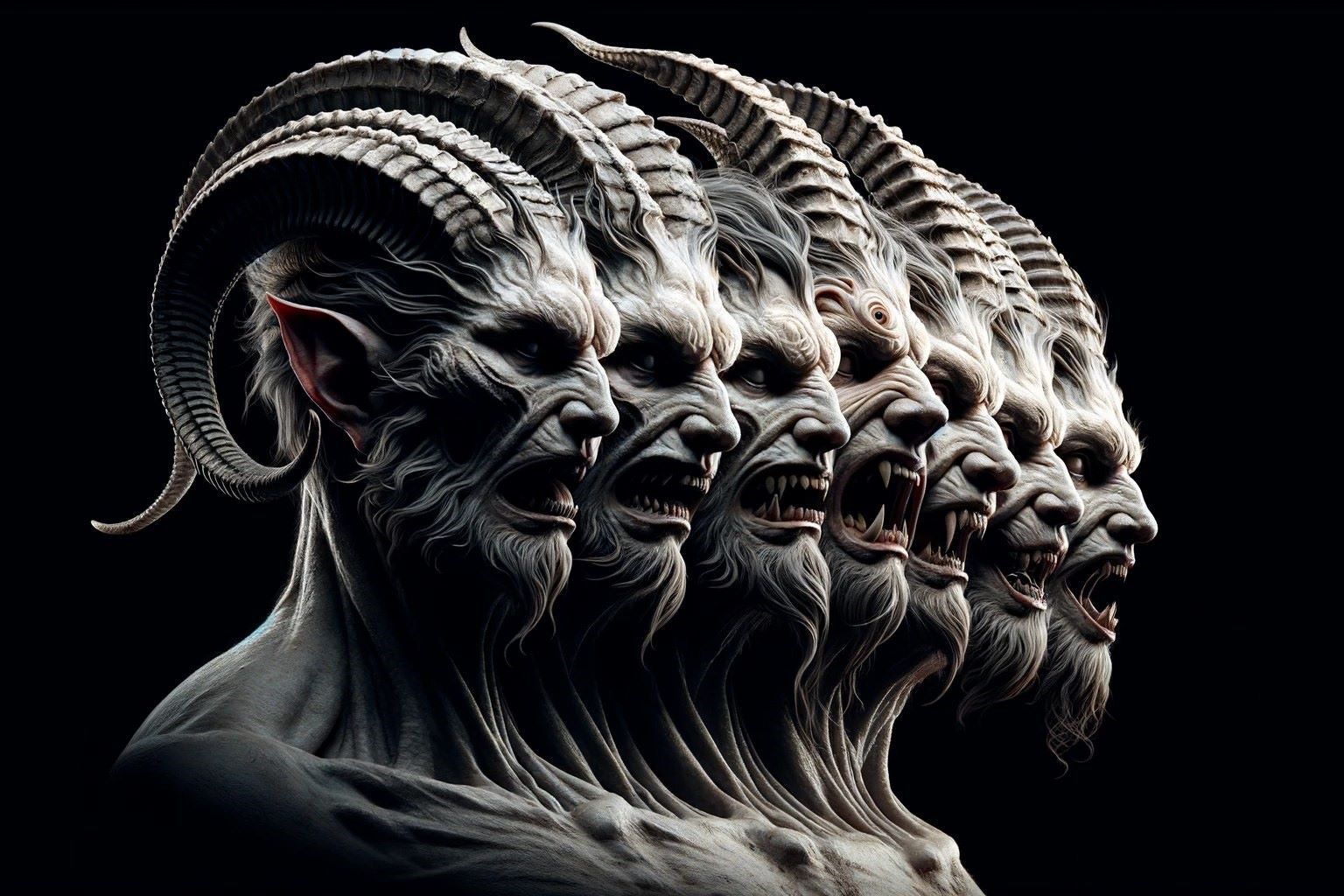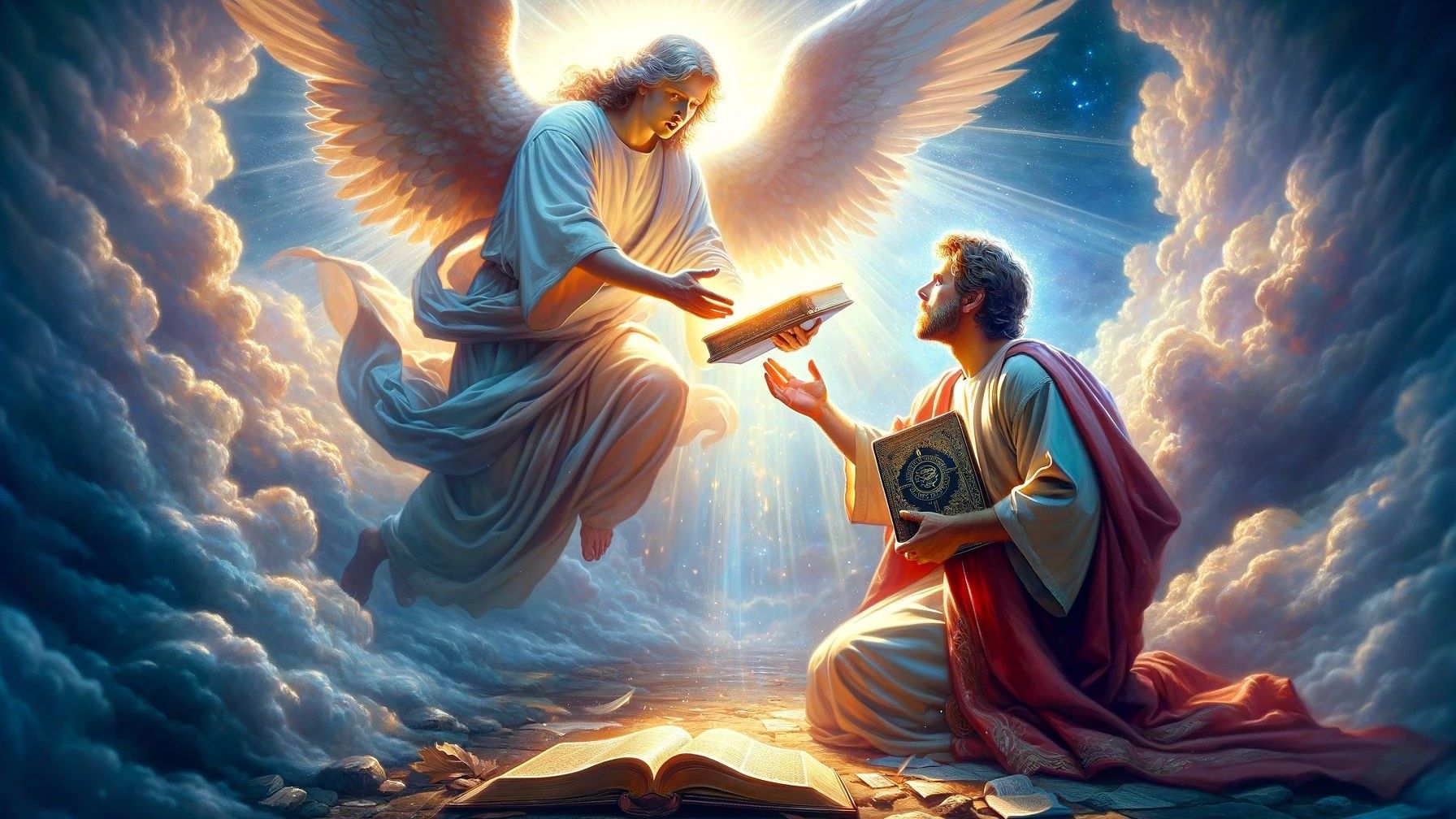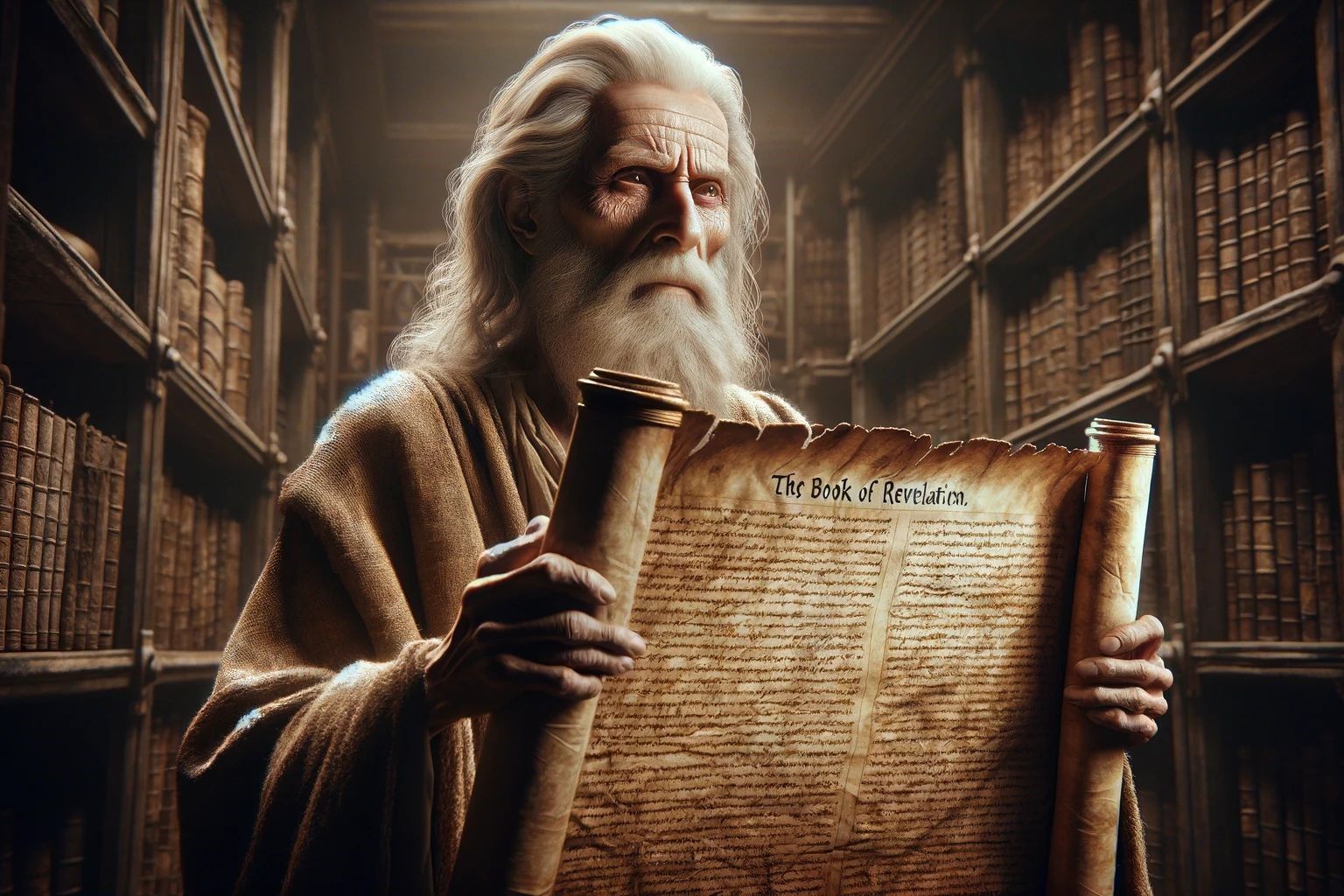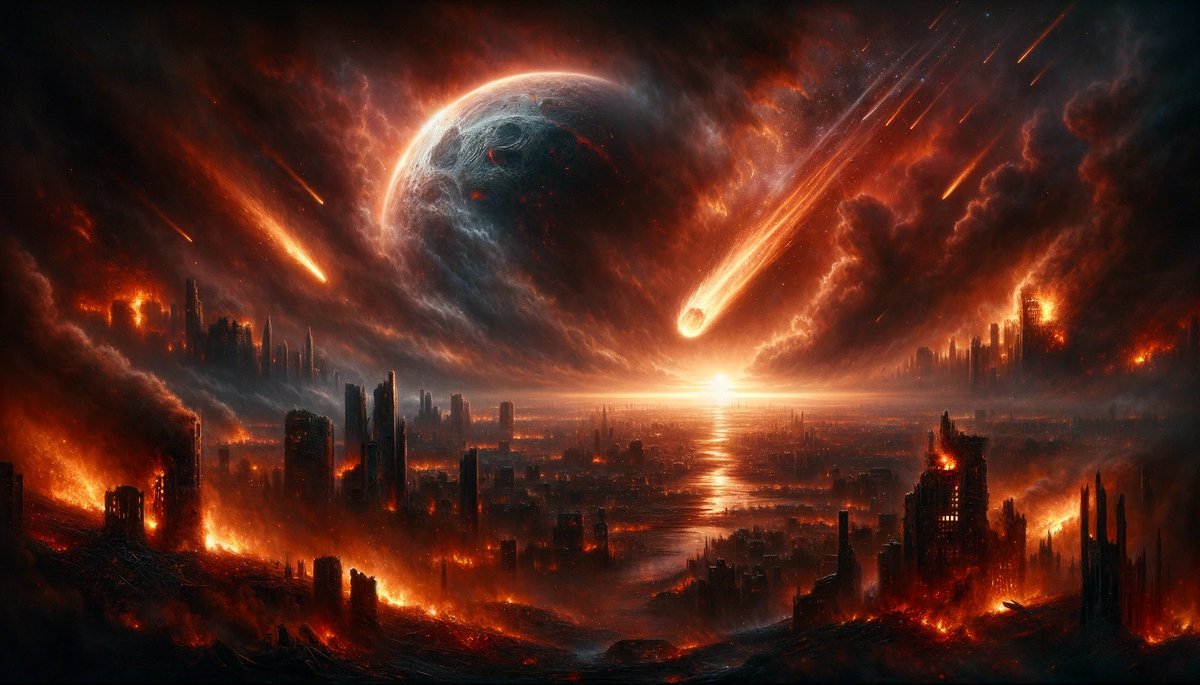Home>Bible Facts>In The Book Of Revelation, What Is The Number Of Heads Of The Beast


Bible Facts
In The Book Of Revelation, What Is The Number Of Heads Of The Beast
Published: February 11, 2024
Peter Smith, Editorial Director at Christian.net, combines deep insights into faith, politics, and culture to lead content creation that resonates widely. Awarded for his contributions to religious discourse, he previously headed a major organization for religious communicators, enhancing dialogue on faith's societal impacts.
Discover the biblical significance of the number of heads of the beast in the Book of Revelation. Uncover fascinating Bible facts and interpretations. Explore more with us!
(Many of the links in this article redirect to a specific reviewed product. Your purchase of these products through affiliate links helps to generate commission for Christian.net, at no extra cost. Learn more)
Table of Contents
Introduction
The Book of Revelation, the final book of the Christian Bible, is a captivating and enigmatic text that has intrigued and inspired countless individuals throughout history. Within its pages, vivid imagery and symbolic language are used to convey profound spiritual truths and prophetic visions. One of the most intriguing elements of the Book of Revelation is the depiction of a fearsome entity known as the Beast. This mysterious figure, described in Revelation 13, has captured the imagination of scholars, theologians, and believers for centuries.
The Beast is portrayed as a powerful and malevolent force, wielding authority and influence over the earth. Its appearance is marked by a combination of animalistic features, including the body of a leopard, the feet of a bear, and the mouth of a lion. However, it is the number of heads of the Beast that has sparked intense speculation and debate among scholars and theologians.
In this article, we will delve into the significance of the number of heads of the Beast as described in the Book of Revelation. We will explore the various interpretations and symbolic meanings associated with this enigmatic detail, shedding light on its potential significance within the broader context of biblical prophecy and eschatology. By unraveling the mystery surrounding the number of heads of the Beast, we aim to gain a deeper understanding of the profound symbolism and spiritual truths embedded within the Book of Revelation.
The Beast in the Book of Revelation
The Beast, as depicted in the Book of Revelation, is a central figure in the apocalyptic visions received by the author, traditionally attributed to the apostle John. Described in Revelation 13, the Beast emerges from the sea, symbolizing chaos and tumult, and is imbued with authority and power. Its appearance is a composite of various animalistic features, including the body of a leopard, the feet of a bear, and the mouth of a lion. This amalgamation of traits underscores the Beast's formidable and fearsome nature, evoking a sense of dread and awe.
The Beast is not merely a physical entity but represents a complex amalgamation of spiritual, political, and socio-economic forces that exert influence over the world. Its seven heads and ten horns further emphasize its dominion and authority, signifying a comprehensive and pervasive reach. The imagery of the Beast serves as a potent symbol of oppressive and tyrannical systems that seek to subjugate and control humanity.
Throughout the Book of Revelation, the Beast is depicted as a formidable adversary, waging war against the forces of righteousness and persecuting the faithful. Its actions are characterized by deception, coercion, and intimidation, reflecting the pervasive nature of evil in the world. The Beast's association with the infamous number 666, often referred to as the "mark of the beast," further underscores its malevolent and antithetical nature to divine truth and righteousness.
The portrayal of the Beast in the Book of Revelation serves as a stark reminder of the spiritual and moral challenges faced by believers in the face of adversity and persecution. It symbolizes the enduring struggle between good and evil, righteousness and wickedness, and the ultimate triumph of divine justice over the forces of darkness.
As we delve deeper into the symbolic tapestry of the Book of Revelation, the enigmatic nature of the Beast invites contemplation and interpretation. Its significance extends beyond a mere representation of malevolence; it serves as a poignant reminder of the enduring spiritual warfare and the unwavering hope of redemption and deliverance. The Beast's presence in the apocalyptic visions of Revelation underscores the profound theological and eschatological themes that continue to captivate and inspire readers across generations.
The Number of Heads of the Beast
The Book of Revelation provides a vivid description of the Beast, emphasizing its seven heads and ten horns. This imagery holds profound symbolic significance within the context of biblical prophecy and eschatology. The number of heads of the Beast represents a multifaceted symbol that has sparked diverse interpretations and theological reflections.
The symbolism of the seven heads is deeply rooted in ancient cultural and religious contexts. In the ancient Near East, the number seven held significant symbolic value, representing completeness, perfection, and divine fulfillment. The seven heads of the Beast may signify its comprehensive and all-encompassing authority, reflecting a complete manifestation of oppressive and tyrannical power. Furthermore, the seven heads may also allude to the multifaceted nature of evil, encompassing various manifestations and deceptive influences that seek to undermine divine truth and righteousness.
Moreover, the number ten, represented by the horns of the Beast, carries its own symbolic weight. In biblical symbolism, the number ten often signifies completeness and totality, reflecting a comprehensive scope or fullness. The ten horns of the Beast may symbolize its pervasive and far-reaching dominion, encompassing the entirety of worldly power and authority. This imagery underscores the formidable and all-encompassing nature of the Beast's influence, portraying it as a force that seeks to exert control over every aspect of human existence.
The combination of the seven heads and ten horns within the depiction of the Beast conveys a sense of overwhelming and pervasive authority, representing a comprehensive and all-encompassing manifestation of oppressive power. This imagery serves as a stark reminder of the enduring struggle between the forces of righteousness and the pervasive influence of malevolent entities, as well as the ultimate triumph of divine justice over the forces of darkness.
The symbolic significance of the number of heads of the Beast extends beyond mere numerical representation; it encapsulates profound theological and eschatological themes. It serves as a potent reminder of the enduring spiritual warfare and the unwavering hope of redemption and deliverance. The enigmatic imagery of the Beast's heads invites contemplation and interpretation, prompting readers to delve deeper into the profound spiritual truths embedded within the Book of Revelation.
The number of heads of the Beast stands as a testament to the enduring relevance and timeless significance of the apocalyptic visions presented in the Book of Revelation. It serves as a poignant reminder of the enduring struggle between good and evil, righteousness and wickedness, and the ultimate triumph of divine justice over the forces of darkness.
Interpretations of the Number of Heads
The number of heads of the Beast in the Book of Revelation has sparked a myriad of interpretations and theological reflections, each offering unique insights into its symbolic significance. These interpretations have been shaped by diverse theological traditions, historical contexts, and exegetical approaches, contributing to a rich tapestry of understanding regarding this enigmatic detail.
One interpretation posits that the seven heads of the Beast symbolize the culmination of human defiance and rebellion against divine authority. Each head represents a manifestation of human arrogance, pride, and opposition to the sovereignty of God. This interpretation underscores the pervasive nature of human sinfulness and the enduring struggle between the forces of righteousness and the pervasive influence of malevolent entities.
Another perspective suggests that the seven heads of the Beast symbolize the deceptive and multifaceted nature of evil. Each head represents a different facet of malevolence, encompassing various forms of deception, coercion, and spiritual darkness. This interpretation highlights the insidious and pervasive nature of evil, emphasizing the need for discernment and spiritual vigilance in the face of deceptive influences.
Furthermore, some interpretations emphasize the historical and geopolitical dimensions of the number of heads. The seven heads have been associated with various empires and ruling powers throughout history, each embodying oppressive and tyrannical characteristics. This interpretation underscores the enduring relevance of the apocalyptic visions in Revelation, offering insights into the complex interplay between spiritual and earthly powers throughout the ages.
Additionally, the symbolic significance of the ten horns has also elicited diverse interpretations. Some theologians view the ten horns as representative of earthly kingdoms or ruling authorities that align themselves with the oppressive forces symbolized by the Beast. This interpretation underscores the pervasive and far-reaching influence of malevolent entities, reflecting the comprehensive scope of their dominion over the earth.
In contrast, other interpretations emphasize the ultimate triumph of divine justice and righteousness over the forces of darkness symbolized by the Beast. The imagery of the seven heads and ten horns serves as a prelude to the eventual defeat and overthrow of oppressive powers, heralding the establishment of God's eternal kingdom and the restoration of divine order.
These interpretations collectively underscore the depth and complexity of the symbolic imagery surrounding the number of heads of the Beast in the Book of Revelation. They invite readers to engage in thoughtful reflection and contemplation, prompting a deeper understanding of the enduring spiritual truths and eschatological themes embedded within this enigmatic detail.
Conclusion
In conclusion, the number of heads of the Beast in the Book of Revelation stands as a profound and enigmatic symbol that encapsulates multifaceted theological and eschatological significance. The imagery of the seven heads and ten horns serves as a potent reminder of the enduring struggle between the forces of righteousness and the pervasive influence of malevolent entities, as well as the ultimate triumph of divine justice over the forces of darkness.
The symbolic richness of the Beast's heads invites contemplation and interpretation, prompting readers to delve deeper into the profound spiritual truths embedded within the Book of Revelation. The number of heads represents a comprehensive and all-encompassing manifestation of oppressive power, reflecting the multifaceted nature of evil and the pervasive reach of malevolent forces seeking to undermine divine truth and righteousness.
Furthermore, the interpretations of the number of heads offer diverse insights into its symbolic significance, encompassing theological, historical, and geopolitical dimensions. These interpretations underscore the enduring relevance of the apocalyptic visions in Revelation, shedding light on the complex interplay between spiritual and earthly powers throughout history.
Ultimately, the symbolism of the Beast's heads serves as a poignant reminder of the enduring spiritual warfare and the unwavering hope of redemption and deliverance. It underscores the profound theological themes of divine sovereignty, human rebellion, and the ultimate victory of righteousness over evil. The enigmatic imagery of the Beast's heads continues to captivate and inspire readers, inviting them to contemplate the profound spiritual truths embedded within the Book of Revelation.
As we navigate the complexities of the symbolic imagery in the Book of Revelation, the number of heads of the Beast stands as a testament to the enduring relevance and timeless significance of its apocalyptic visions. It serves as a poignant reminder of the enduring struggle between good and evil, righteousness and wickedness, and the ultimate triumph of divine justice over the forces of darkness. The enigmatic symbolism of the Beast's heads continues to beckon readers into a deeper exploration of the profound spiritual truths and eschatological themes that permeate the pages of the Book of Revelation.















